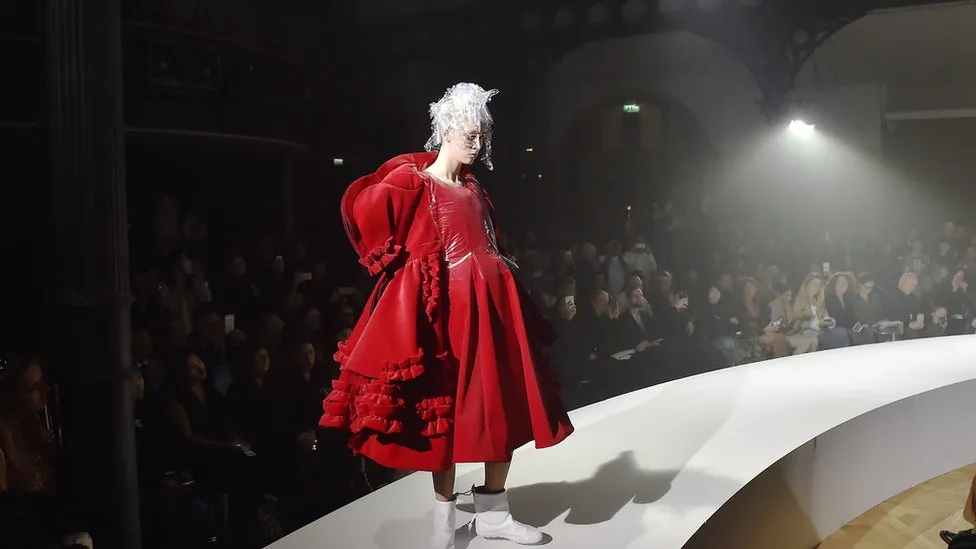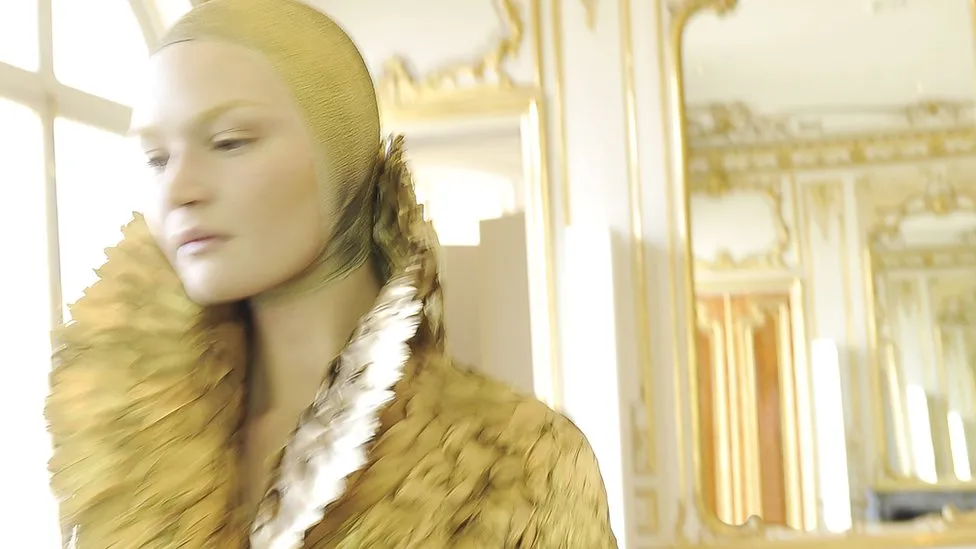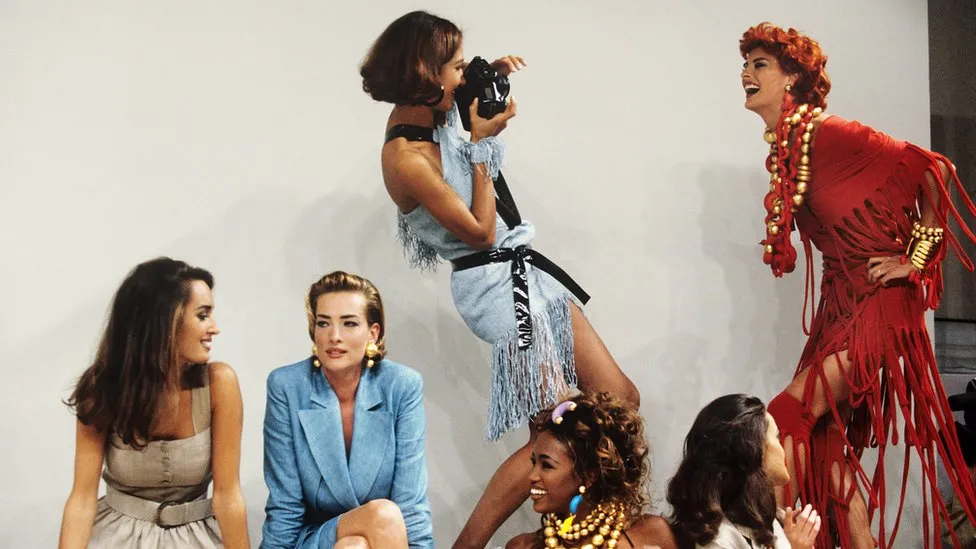The Different Roles And Specialisms Within Fashion Photography
- bethanyhutchison4
- Jan 29, 2024
- 6 min read
Updated: May 13, 2024

Image Credit: Chris Moore, Lara Jade, Bethany Hutchison
Thumbnail Design: Bethany Hutchison
Photography within the Fashion Industry tends to be more complex than the preconceived ideas and opinions individuals have whereby an individual simply ‘presses a button’ and effortlessly captures a beautiful model. There are in fact many factors that need to be taken into consideration before a shoot such as model scouting, location scouting, fittings, lighting test-shots, creative direction and, in some cases scouting shadow photographers, alongside post-production work such as editing and retouching. In addition, not all fashion photography is the same. In fact, many individuals choose to specialise within a certain style of fashion photography such as catwalk, editorial, advertorial, ecommerce and still life/product photography.
Before becoming a successful fashion photographer individuals often have to work their way up the career ladder. Many individuals start where I currently am, in education, where they are able to use their creative learning experiences in order to experiment with shooting and (as a result) find their specific photography style and specialism. Whilst this self-discovery is taking place many people also start to source internships which provide an individual with a taster into their future career.
Many internship roles entail assistive runner or photographers assistant tasks. Although these roles are not what many people aspire to be it is invaluable that people wanting to work their way into the fashion photography sphere seize these opportunities as they are a great way to network with established creatives and are often impressive in future job applications.
After working as an intern and building a portfolio individuals are often ready to book their own shoots as freelance photographers. Freelance work is a form of self-employment in which individuals provide their creative skills and talent to clients (Smith, 2023). In a creative industry freelancing is an often unstable job due to competition from other creatives within the fashion photography sphere. As a result, individuals may choose to sign with a photography agent. By signing with a photography agency individuals are able to showcase their work to a larger variety of clients. If a photographer is booked via one of these agencies the agency tends to adopt the marketing and promotion roles of managing the shoot. In return they require a commission from the photographer as a form of payment (Unknown I, 2024). Influential agencies within the fashion industry are as follows: The Agents Club, Streeters, clm agency and Rosco Production (Unknown II, 2024).
The different specialisms within fashion photography
Catwalk
Catwalk photography (also known as runway photography) is quite simply the art of capturing models walking along a catwalk. To many fashion designers catwalk photographers are invaluable assets to the show as they capture what the model is wearing. These photographer’s gain access to the show under the title of ‘event photographer’ allowing them to capture their images and then sell the images onwards. Fashion show pricing and rates are varied. In some cases individuals would have been paid directly by the brand to be present. However, for other individuals who have not been paid by the brand photographing a catwalk may be seen as a great opportunity to build a portfolio rather than to make money. These images can then be used as a form of publicity on third party sites (such as Vogue) and as look book style images on the designer’s website ensuring that those who were not able to watch the fashion show are still able to see the artistry of the designer’s work (Unknown III, 2024).
One of the most prominent figures within the catwalk photography industry is Chris Moore. Chris Moore first started his fashion photography career in his early 20s when his wife (a fashion journalist) invited him to join her whilst she documented a collection. At this point in his career both Moore and his wife had to pay £4 to capture a model of their choice! However, now (60 years later) the demand for Moore’s expertise has seen a dramatic shift with the individual being paid to shoot catwalk shows for International agencies alongside third-party websites such as The Guardian, The Observer, Drapers, The Financial Times and The International Herald Tribune (Conlon, 2018).
Image Credit(s): Chris Moore via Catwalking
Editorial
In addition to catwalk photography another example of fashion photography is editorial photography. Traditionally, editorial photography refers to photography which is shown within a publication however, the concept of this style of photography has now shifted and can be used as a standalone narrative tool. Often editorial photography is misconceived to be advertorial photography (or vice versa) however, editorial photography (unlike advertorial photography) is not created to advertise a certain brand, garment or product (Hudson, 2023). Whilst being at university I have already been provided with invaluable insights on how to plan an editorial shoot (as evidenced within my BA1a Dazed brief). This will be incredibly beneficial to me in my future endeavours as I will be experienced in creative direction, model scouting and lighting alongside the art of photography itself.
Some of the most renowned editorial photographers are as follows: Richard Avedon, Nick Knight, Tim Walker, Ellen Von Unwerth and Lara Jade. Lara Jade is an editorial photographer who was born in Staffordshire, England. She first started to home in her creative photography practise when she picked up a camera aged fourteen. Jade is inspired and influenced by self-portraiture and conceptual photography and enjoys creating timeless and emotive imagery surrounding themes such as feminine strength, unique beauty and lasting style. Jade’s passion for photography has allowed the individual to work for a range of clients and publications including (but not limited to) Bare Minerals, Bobbi Brown, Oscar De La Renta, Harper’s Bazaar, Rollacoaster magazine and Stella Magazine (Jade, 2024).
Image Credit: Lara Jade
Advertorial
As mentioned previously, Advertorial photography is another form of photography used within the fashion industry. Advertorial photography is a form of advertising in which photographs are captured in clever ways in order to tap into someone’s psychology and thus persuade them that they need the product which has been captured. Advertorial photographers use psychology to their advantage by evoking emotion within their photographs. For example, a brand may commission a photographer to promote their products by using consumer based aspirations in order for the audience to form an emotional attachment to the imagery (Unknown IV, 2024).
Tim Hawley is one of the most influential individuals within the advertorial industry owning a a full-service commercial studio based in LA where Hawley is able to collaborate with individuals from around the world. Hawley makes it a priority to be present for not just the production stages of his images but also for pre and post-production. This level of commitment has enabled Hawley’s work to be recognised by a range of organisations such as the American Advertising Federation and Prix De La Photographie Paris (Hawley, 2015).
Image Credit: Tim Hawley
Ecommerce
Ecommerce photography is another form of fashion photography in which products are captured in simple minimalistic ways in order to be published on online stores (such as Asos, Urban Outfitters and H&M), third-party marketplaces (such as Depop or Vinted) and on social media (Danan, 2021). Part of ecommerce photography also includes packaging photography which is a style of photography which I have done most recently as part of my marketing report. Packaging imagery is a way to showcase a product in order to encourage an individual to purchase the item. I particularly enjoyed shooting packaging as there is an element of flexibility in terms of chosen backdrop colours, props and compositions allowing me to lean more into editorial still life shots if I wished. After shooting these packaging images I hope to continue shooting this subject matter and could potentially see myself developing this style of photography further for the remainder of my university education and once I am within the fashion industry.
Image Credit: Bethany Hutchison
Bibliography
Conlon, Scarlett (2018) ‘Meet Chris Moore, the 84-year-old pioneer of catwalk photography’. Available at: https://www.theguardian.com/fashion/2018/jul/06/meet-chris-moore-the-84-year-old-pioneer-of-catwalk-photography (Accessed 29.01.24)
Danan, Tammy (2021) ‘Ecommerce Photography: Your Tool to Boosting Conversion Rates’. Available at: https://www.powproductphotography.com/blog/what-is-ecommerce-photography/#:~:text=Ecommerce%20photography%20is%20product%20imagery,%2C%20social%20media%2C%20and%20more(Accessed 29.01.24)
Hawley, Tim (2015) ‘Tim Hawley Contact I About’. Available at: http://www.timhawley.com/info-contact-|-about(Accessed 29.01.24)
Hudson, Stephen (2024) ‘Bring Narratives to life with editorial photography’. Available at: https://www.adobe.com/uk/creativecloud/photography/discover/editorial-photography.html (Accessed 29.01.24)
Jade, Lara (2024) ‘About Lara Jade’. Available at: https://www.larajade.com/about (Accessed 29.01.24)
Smith, Jemma (2023) ‘Freelancing’. Available at: https://www.prospects.ac.uk/jobs-and-work-experience/self-employment/freelancing#:~:text=career%20from%20freelancing-,What%20is%20freelancing%3F,d%20like%20to%20work%20for. (Accessed 29.01.24)
Unknown I (2024) ‘Photographer’s Agent job specification. Available at: https://www.the-aop.org/information/the-industry/careers/photography-agent-spec#:~:text=That%20means%20(photographers%27)%20agents,the%20services%20of%20the%20photographer. (Accessed 29.01.24)
Unknown II (2024) ‘Fashion photography’. Available at: https://www.fashionminorityalliance.com/job-roles/fashion-photography/ (Accessed 29.01.24)
Unknown III (2024) ‘Fashion Show Photography Tips & Ideas’. Available at: https://orlandosydney.com/fashion-photography/#:~:text=Fashion%20Runway%20Photography%20is%20the,a%20journalistic%20or%20documentary%20style. (Accessed 29.01.24)
Unknown IV (2024) ‘How To Shoot Advertising Photography’. Available at: https://www.baph.co.uk/blog/the-power-of-advertising-photography (Accessed 29.01.24)

























Comments